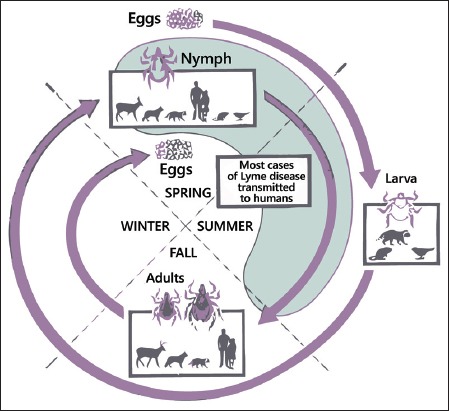Figure 1.

The enzootic cycle of B. burgdorferi. Ixodes spp. ticks undergo a three life cycle – larva, nymph and adult – with one blood meal per stage. Larval ticks feed on many different animals (mice, squirrel, birds), so they acquire B. burgdorferi from infected reservoir animals. There is no transovarial transmission. After molt nymphs can transmit spirochetes to a competent reservoir host (small mammals). Adult ticks are not important for maintained of B. burgdorferi in the wild, as they feed on large animals such as deer, which are incompetent hosts for B. burgdorferi. However, deer are important for maintenance of the tick population. Although all three stages can feed on humans, nymphs are responsible for the vast majority of spirochetes transmission to humans [22].
